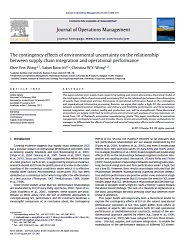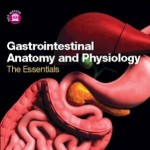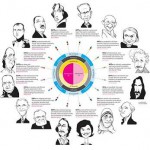شارژهای باتری برای خودروهای برقی
Battery chargers for electric vehicles
تاریخ: ۲۰۰۰
پایگاه: IEEE Xplore
![]()
نام مجله: Power Engineering Review
قیمت: ۱۰۰,۰۰۰ ریال
تعداد صفحات انگلیسی: ۴
تعداد صفحات فارسی: ۸
کد: ۳۰۳۲۳
چکیده فارسی
خودروهای برقی از طریق یک موتور الکتریکی که توسط باتری قابل شارژ تغذیه میشود، به حرکت در میآیند. مشخصه عملکردی مورد نیاز خودروهای برقی بسیار متفاوت از توانایی سیستمهای باتری متداول است. هر چند چون تکنولوژی باتری پیشرفت میکند، شارژ کردن این باتریها به دلیل جریان و ولتاژهای بالای سیستم و الگوریتمهای پیچیده شارژ کردن، پیچیده میشود. این امر منجر به ایجاد اغتشاشهای زیادی در سیتم قدرت ac موجود میشود. از این رو نیاز به شارژرهای موثر با ضریب اعوجاج کم در حال افزایش است.در این مقاله مطالعه کامل عملکرد دو گونه شارژرهای باتری به منظور کاربرد در خودروهای برقی، ارائه میشود. اولین شارژر، شارژر باتری فرورزونانسی مبتنی بر میکروپروسسور است که به عنوان شارژر فرورزونانسی شناخته میشود. قسمت توانرسانی این شارژر یک ترانسفورماتور فرورزونانسی است که از اشباع مواد مغناطیسی از طریق سیمپیچ شامل خازن خود برای تولید کردن خروجی تنظیمشده مشابه شکل موج مربعی، بهره میگیرد.قسمت کنترل به طور متناوب یک بار مقاومتی را در پایانههای باتری در حال شارژ شدن قرار میدهد تا اجازه دهد تغییر در مقاومت نیز آشکارسازی گردد. میکروپروسسور زمانبندی و پالسدهی به گیت سوئیچهای مدار را کنترل میکند و سپس اطلاعات را از مدار مونیتور(نشاندهنده) شارژ باتری جمعآوری و آنالیز میکند. مدار مونیتور افت ولتاژ درون باتری را اندازهگیری میکند که متناسب با مقاومت درونی باتری به هنگام بارگیری است. شارژر دوم یک مبدل چندفازه ac به dc است که از دو ترانسفورماتور سه فاز برای ایجاد ۱۲ فاز استفاده میکند و به عنوان شارژر ۱۲ فازه شناخته میشود. اولیهی یک ترانسفورماتور به صورت دلتا و اولیه ترانسفورماتور دیگر به صورت Y است. ثانویههایی با سر وسط، ۱۲ فاز را ایجاد میکنند. تریستورها برای کنترل ولتاژ خروجی شارژر از طریق کنترل دیجیتالی زاویه آتش آنها، به کار گرفته میشوند. میکروپروسسور مشخصهی شارژ باتری را کنترل میکند. یک مجموعه موتور ژنراتور به منظور شبیهسازی بار برای شارژر در شرایط آزمایش به کار رفتهاند.
چکیده انگلیسی
Electric vehicles (EV) are propelled by an electric motor that is supplied with power from a rechargeable battery. Performance characteristics required for many EV specifications far exceed the capabilities of conventional battery systems. However,as battery technology improves, the charging of these batteries becomes very complicated due to the high voltages and currents involved in the system and the sophisticated charging algorithms. This causes more disturbances in the existing ac power system, thereby increasing the needs for efficient,low-distortion chargers.This article presents a comparative study of the performance of two types of battery chargers being developed for electric vehicles. The first charger is a microprocessor-based ferroresonant battery charger, referred to as the ferroresonant charger. The power delivery section of this charger is a ferroresonant transformer, which exploits the saturation of magnetic materials through its capacitor winding to produce a well-regulated output that resembles a square wave. The control section periodically places a resistive load across the battery under charge that allows this change in resistance to be detected. A microprocessor controls the timing and executes the gating of the needed switches in the circuit and then gathers and analyzes data from the battery charge monitor circuit. The monitor circuit measures the voltage drop across the battery, which is proportional to the battery internal resistance when the load is introduced. The second charger is a multiphase AC-to-DC converter that employs two three-phase transformers to create twelve phases and is called the twelve-phase charger. One transformer primary is in the delta configuration, and the other transformer primary is in the wye configuration. The center-tapped secondaries create the twelve phases. Thyristors are used to control the output voltage of the charger through digital control of the firing angle. A microprocessor controls the charging profile of the battery. A motor-generator set is used to simulate the load to the charger for test conditions
مشخصات استنادی
Morcos, M. M., Dillman, N. G., & Mersman, C. R. (2000). Battery chargers for electric vehicles. Power Engineering Review, IEEE, 20(11), 8-11
دانلود اصل مقاله
 ویژگیهای مقاله شارژهای باتری برای خودروهای برقی
ویژگیهای مقاله شارژهای باتری برای خودروهای برقی
مقاله “شارژهای باتری برای خودروهای برقی” در سال ۲۰۰۰ در مجله Power Engineering Review چاپ شده و در پایگاه اطلاعاتی IEEE نمایه شده است. این مقاله به بررسی خودروهای برقی، شارژ کردن باتری خودروهای برقی، شارژر باتری فرورزونانسی مبتنی بر میکروپروسسور و مبدل چندفازه ac به dc پرداخته است. همچنین براساس اطلاعات پایگاه اطلاعاتی گوگل اسکولار این مقاله ۵۴ بار مورد استناد قرار گرفته است.









دیدگاه خود را ثبت کنید
تمایل دارید در گفتگوها شرکت کنید؟در گفتگو ها شرکت کنید.